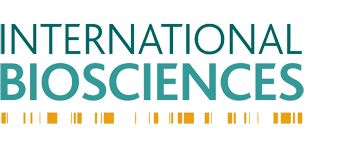Prenatal Scans May Misidentify Identical Twins in Womb
The first response most parents ask their medical care provider when told they are told they are having twins is of course: are they identical or not. Identical twins, monozygotic (MZ) and non-identical twins, dizygotic (DZ), are two very distinct forms of carrying double fetuses. In the case of monozygotic or identical twins the offspring will be of course genetically identical: carry the same traits, look nearly the same, and be of the same sex in every instance. Dizygotic twins, or non-identical twins develop from an entirely different origin. Unlike identical twins where the original fertilized embryo splits into two copies of itself, dizygotic twins each originate from their own embryo. For this reason, non-identical twins will certainly share some genetic traits and material, as would any brother or sister of the same parentage. In cases of non-identical twins the offspring may even be off opposite sexes, for instance one male baby and one female can occur at the same conception. Scientific distinction between identical and non identical twins is possible thanks to twin DNA testing.
For these many particularities in the traits exhibited on twins based on their fertilization, it is no wonder parents expecting twins wish to know what type of twins to expect. Unfortunately the science at this time has not caught up effectively to allow medical professionals to confidently and accurately distinguish between monozygotic and dizygotic twins using prenatal tests currently available. The following study has exposed the frequency with which these tests provided incorrect results to parents.
The Gemeni Study on twins
The Gemeni study was carried out in England to help genetic scientists gather a more scientific analysis of how prenatal twin testing was effected in real life situations. In this study, 2,402 families were questioned. The twin births looked at all took place in the year 2007 and all families lived in England or Wales. In the Gemini study, the goal was to identify parents of twins and ask them if they knew whether they were having identical or non-identical twins prior to the birth of the children, how these tests were carried out, and whether they proved accurate once the children were actually born. The results were shocking to the scientific community and has placed prenatal twin zygosity testing in question.
The vast majority of the parents of the 2,402 families questioned responded positively that yes indeed they had been told by a medical care professional what type of twins they were expecting. A staggering 82% of the respondents had undergone prenatal scans that identify identical or non-identical twins based on the separation of placentation evidenced in the prenatal scans. These tests look at the formation of the placenta in order to determine if the twins appear to come from the same embryo (a split) or if they wholly separate. It should be noted that dizygotic twins, non-identical siblings essentially, are much more common than identical. Seven of eleven twin births are of the non-identical variety.
The shocking results from Gemeni
The results from the Gemeni twin study has placed scrutiny upon the common prenatal procedures utilized by today’s gynecologists and obstetricians. In a staggering 14.7% of the parents questioned, the results from their zygosity testing did not coincide with the actual type of twins born. Further questioning revealed that in 179 of 651 families, or 27.5% parents believed they were having the much more common non-identical twins only to find that upon birth the twins were in fact identical.
There is no solid explanation from medical professionals at this time as to the discrepancy between the prenatal tests and their non-scientific results. It is theorized that these prenatal tests are being performed too late and are not accurate in identifying already separated placenta. Further study is required.

